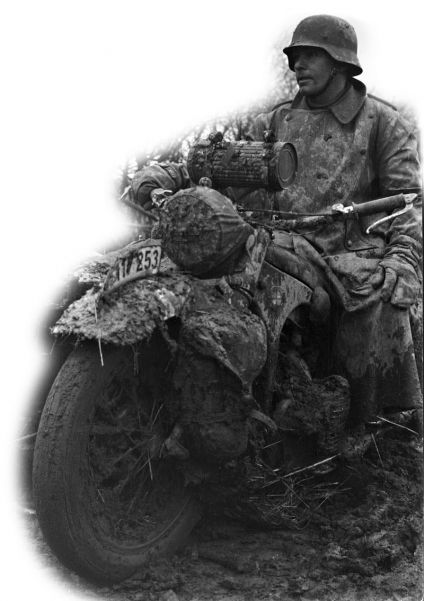1 November
Eastern Front, Ukraine

Germany launches an offensive on Rostov, at the mouth of the Don River. The Soviet Ninth Army’s deep and flexible defensive lines, together with the winter weather, obstruct the encirclement. A Frontal assault from the coast on the 17th is then counterbalanced by the Soviet Thirty-seventh Army’s attack north of the city. The Germans capture Rostov on the 21st but the Soviets recapture it within eight days. General Gerd von Rundstedt then resigns after defying Hitler’s orders concerning a tactical withdrawal from the city.
6 November
Politics, United States
A loan of US $1 billion is made to the Soviet Union for Lend-Lease purchases.
13 November
Sea War, Mediterranean
Two U-boats attack the British carriers Argus and Ark Royal en route to Gibraltar after flying off fighters to Malta. Ark Royal is badly hit. The carrier sails to within 25 miles (40 km) of Gibraltar when a fire breaks out and the ship sinks along with 70 aircraft.
15 November
Eastern Front, Soviet Union
The strength, mobility, morale, and logistical support of the German forces on the Eastern Front are severely affected by fierce winter weather. By the 27th, the panzer spearheads are only 20 miles (32 km) from Moscow, but the second phase of the advance is soon halted by Soviet counterattacks and freezing temperatures. Red Army troops, many newly equipped with the superb T-34 tank and Katyusha multiple rocket-launchers, are also properly clothed for winter operations. They are reinforced by partisan volunteers, whose hatred of the enemy is increased by Nazi atrocities against Soviet civilians.
18-26 November
Africa, Libya
The British Eighth Army in Egypt, under General Sir Alan Cunningham, launches Operation Crusader to relieve Tobruk by striking into Cyrenaica. British light tanks suffer serious losses (exacerbated by mechanical and tactical shortcomings) in various engagements with the Germans around Sidi Rezegh, southeast of Tobruk, from the 19th to the 23rd.
On the 22nd, the Tobruk garrison attacks besieging Italian units in order to link up with the Eighth Army advancing to relieve it. General Erwin Rommel then strikes at the Allied flank but sustains heavy losses. He eventually retreats, relieving the pressure on Tobruk, although the fighting continues. On the 26th, General Neil Ritchie relieves Cunningham.
26 November
Sea War, Pacific
The Japanese First Air Fleet of six aircraft carriers, two battleships, three cruisers, nine destroyers, three submarines, and eight tankers leaves the Kurile Islands on a mission to destroy the US Pacific Fleet at Pearl Harbor, Hawaii. The carrier force, under Admiral Chuichi Nagumo, sails 3400 miles (5440 km) and remains undetected by maintaining strict secrecy and radio silence. Japan’s war aims are to destroy US naval power in the region, their only real threat, and then to seize territories in the Pacific and Far East. By establishing their ‘Greater East Asian Co-Prosperity Sphere,’ they can then obtain their economic resources and establish a defensive perimeter to repel attacks.
A series of diplomatic exchanges between Japanese and US officials has proved unsuccessful, and war appears inevitable. The United States mistakenly believes that Japan will launch its first offensive against the Philippines, Borneo, or the Malay Peninsula - Hawaii is not thought to be a likely target. Japan will thus take the US Pacific Fleet completely by surprise when its forces attack the naval base.
27-28 November
Africa, Ethiopia
After an Allied attack on the city of Gondar, northwest Ethiopia, General Nasi, the local Italian commander, orders the surrender of 20,000 troops. Ethiopia’s liberation by the Allies is complete.
30 November
Sea War, Atlantic
The first successful attack using Air-to-Surface-Vessel radar is made by a British bomber, which sinks U-206 in the Bay of Biscay.
